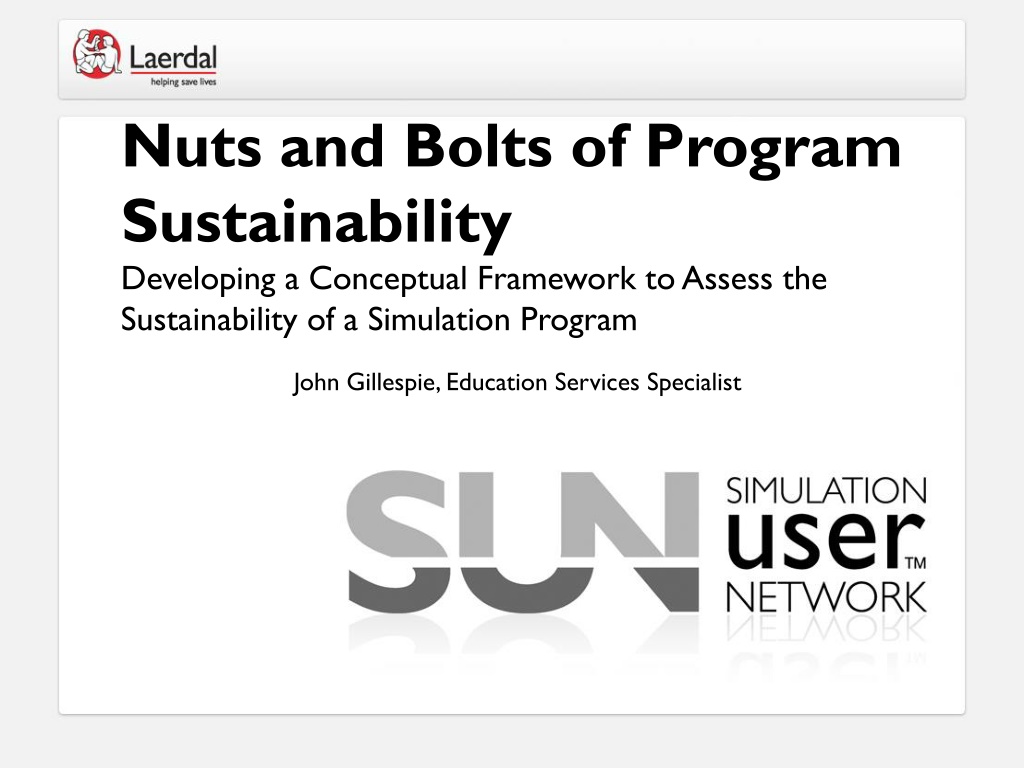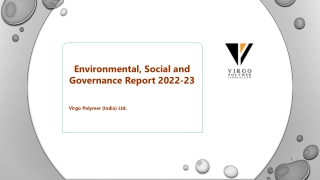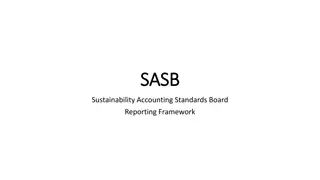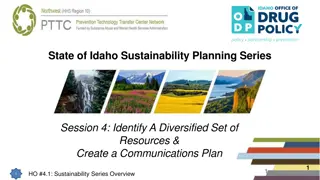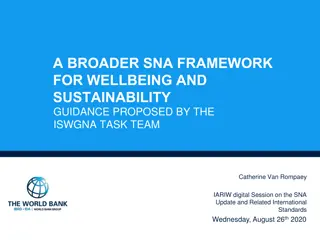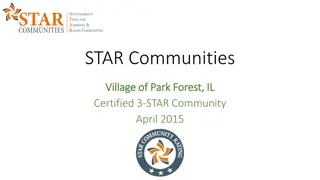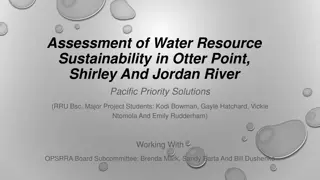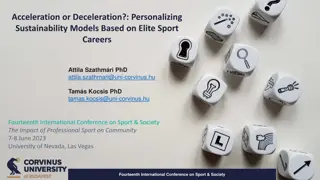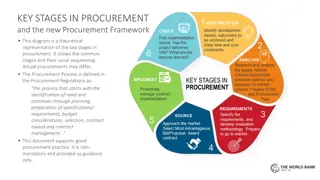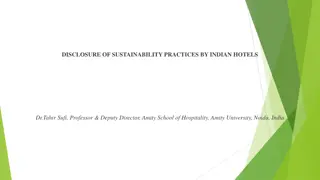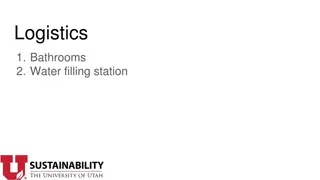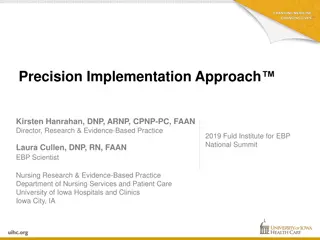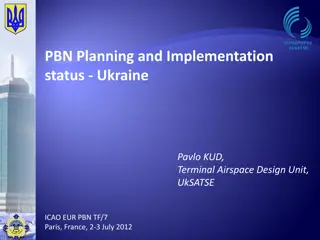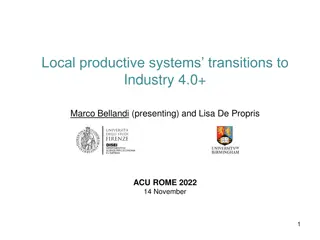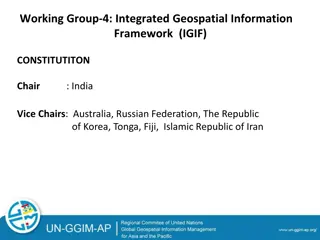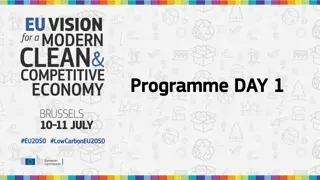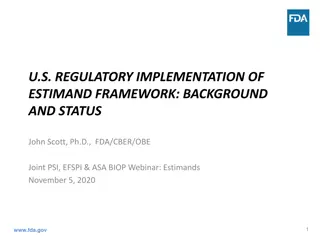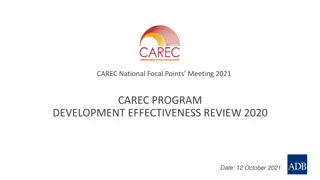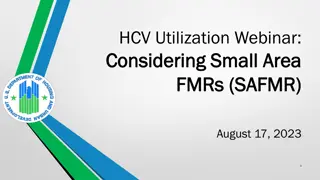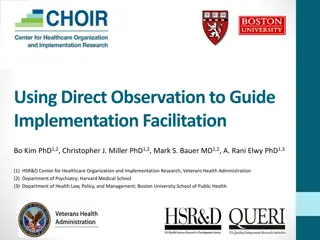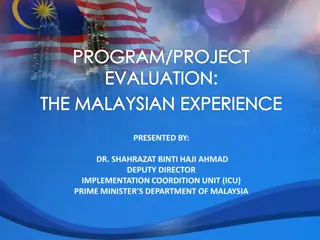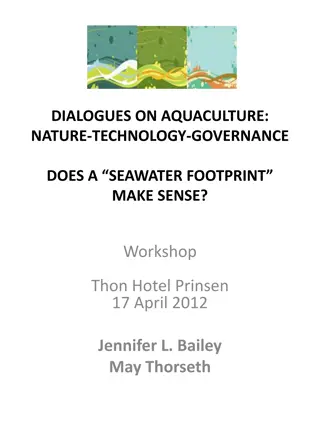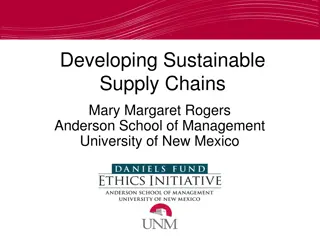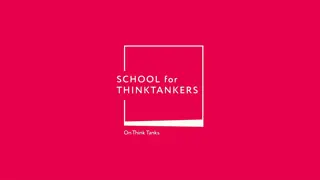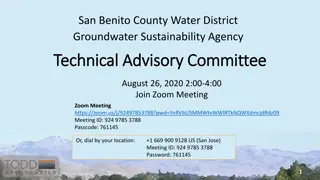Program Sustainability Framework and Implementation Strategies
Developing a conceptual framework to assess the sustainability of a simulation program involves identifying key components, areas for assistance, and support needed. Focus areas include organizational buy-in, faculty development, curriculum integration, and overcoming barriers to simulation. Incorporating simulations into a curriculum requires administrative and technology support, faculty development, and equipment resources, guided by evidence-based practices. Strategies for organizational buy-in include ROI, ROE, data collection, policy development, and stakeholder communication. Overcoming barriers involves understanding internal/external customers, customer service models, and utilizing task forces to address organizational challenges.
- Sustainability Framework
- Simulation Program
- Faculty Development
- Curriculum Integration
- Organizational Buy-In
Uploaded on Sep 19, 2024 | 0 Views
Download Presentation

Please find below an Image/Link to download the presentation.
The content on the website is provided AS IS for your information and personal use only. It may not be sold, licensed, or shared on other websites without obtaining consent from the author. Download presentation by click this link. If you encounter any issues during the download, it is possible that the publisher has removed the file from their server.
E N D
Presentation Transcript
Nuts and Bolts of Program Sustainability Developing a Conceptual Framework to Assess the Sustainability of a Simulation Program John Gillespie, Education Services Specialist
Objectives: Identify four components that are key to a sustainable model Identify at least three areas in each section to assist in the modeling process Identify where you can get assistance
A picture is worth a thousand words What does your simulation path look like?
Or are you creating a simulation program that is organizationally driven?
Four areas of focus: Organizational Buy In Faculty/Personnel Development Curriculum Integration Overcoming Barriers to Simulation
From the evidence what is needed to incorporate simulations into a curriculum? Administrative support Technology support and infrastructure Equipment resources Curriculum plan Faculty development Reference: Pamela R. Jeffries PhD, RN, FAAN, ANEF- Professor of Nursing, Vice Provost for Digital Initiatives- Johns Hopkins University Presentation: Simulation-Based Curriculum and the integration of vSims Retrieved from Laerdal American Sales Meeting 2014
Organizational Buy In ROI (Return on Investment) ROE (Return on Expectation) Utilization Data Collection Evaluation Data Collection Leading indicators are usually pretty close to accurate Policy and Procedures that are specific to your organization Care about what keeps your organizational leaders up at night Create a value statement Insure that the stakeholder gets a regularly scheduled report
Overcoming Barriers to Simulation Identify your internal and external customers What is your customer service model? Identify your barriers to simulation from an organizational perspective through the use of a task force One tool to help with this is a task force created survey of your organization to identify barriers to use Partner with Risk Management/ Curriculum Committee
Overcoming Barriers to Simulation Create a concept map for organization integration -Map out how and where simulation is going to be used Budget your simulator and or scenario purchases so that they are directly tied to your organization s learning objectives Monitor your action plans
Overcoming Barriers to Simulation Example of a curriculum map Possible SIM Course Hours Lecturer Semester 1 (i)The art and science of Clinical medicine Medical Professionalism/Bioethics Health and Development Soft skills Interviewing techniques Writing and presenting patient interviews (ii)Structure and Function Anatomy 1 (Back, Upper limb, Lower limb, Abdomen & Pelvis) Physiology1 (General physiology & Systemic physiology) 460 20 Smith Smithfield # X X X 150 X 100 30 30 20 Cell biology/Histology 1 Embryology 1 (iii)Determinants of Community Health Research Methodology X X Johnson/ Holder Occupational and Environmental Health Epidemiology (iv) Metabolism and Nutrition Biochemistry 1 Molecular Biology 100 X Andrews
Overcoming Barriers to Simulation Are your simulations effective? Are your simulations academically effective? Are your simulations organizationally effective? Are your simulations operationally effective?
Measuring Outcomes The effectiveness of your program is only as relevant as the effectiveness of the tool(s) that you are using to measure it by.
Measuring Outcomes The effectiveness of your program is only as relevant as the effectiveness of the tool(s) that you are using to measure it by. Using the Kirkpatrick model, as one example, you can and should measure the effectiveness of the learning objectives met right after the simulation and then again 6 months later.
Measuring Outcomes The effectiveness of your program is only as relevant as the effectiveness of the tool(s) that you are using to measure it by. Using the Kirkpatrick model, as one example, you can and should measure the effectiveness of the learning objectives met right after the simulation and then again 6 months later. Is the behavior reflecting what was learned during simulation (Debriefing)? Report this back to the stakeholder. Are you indicating a beneficial return on investment?
Faculty Development Create a Faculty Development program through the Simulation Task Force that focuses on a needs assessment or survey results This method gives ownership to the end users Next, repeat the course on a smaller scale to develop good simulation habits Reference the policy guide Create a standardized competency check off tool that you show to the faculty. This will give them a goal.
Curriculum Integration While partnering with the curriculum committee / risk management, thoughtfully integrate in small doses over a long period. 3 years for a small/medium sized organization (Practical Health Care Simulations, Paperback July 30, 2004) by Gary E. Loyd MD (Author),Carol L. Lake MD MBA MPH (Author),Ruth Greenberg PhD (Author) ISBN-13:978-1560536253 ISBN-10:156053625X Edition:1st In academia, back into the curriculum by starting your first simulations with the graduating student body. Insure quality over quantity.
Curriculum Integration Tie all scenarios to clinically relevant learning objectives Tie all scenarios to clinically relevant learning objectives Tie all scenarios to clinically relevant learning objectives Utilize your task force as a simulation creation and peer review committee
How is simulation use valuable? Value 1- Simulation is only valuable if you use it. A simulator that is unused/under utilized has no value. Worse, it is a cost center and a financial drain on the organization.
How is simulation use valuable? Value 2.- Educationally effective simulation not only allows the learners to connect the dots , but it also can change behaviors in an organization. The result can allow you to focus your training dollars to effect Reduce your malpractice costs Reduce time spent in training Improve patient outcomes
How is simulation use valuable? Value 3.- Use as a recruiting tool to draw in candidates that increase the overall value of your organization.
How is simulation use valuable? Value 4.- Repeatability regardless of the patient census at any given moment. Allows for a consistent product to be delivered to the learners.
Thank you for your attendance at Laerdal s San Diego SUN Conference Questions & feedback
